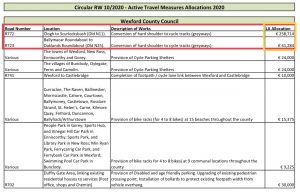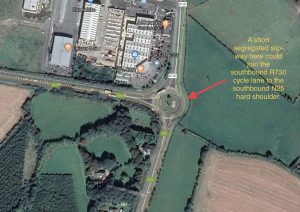Some of you might be familiar with a Facebook post by T.D. Michael D’Arcy following the opening of the new section of the M11 motorway.
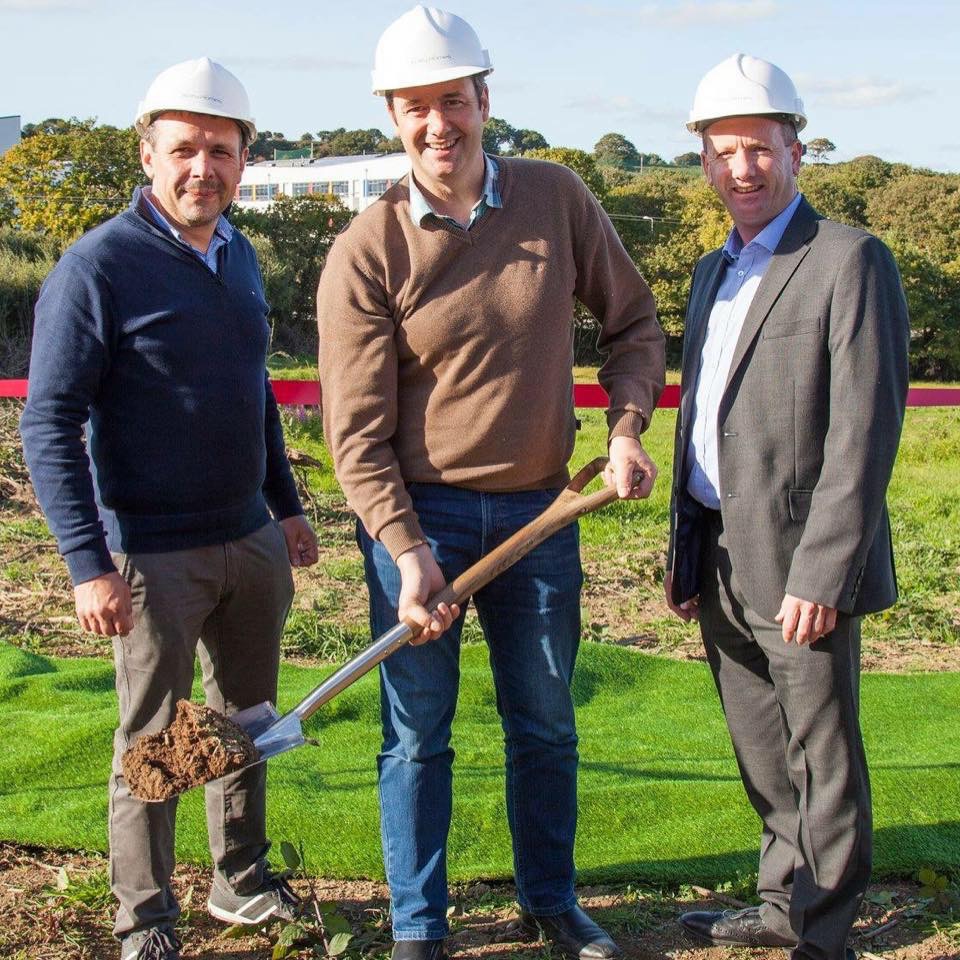
‘I am proposing a cycling ”greyway” to be introduced along the old N11 road, linking Wicklow & Wexford. This can be achieved by reconfiguring the existing road to have a separate, safe designated cycle lane, this is a ”for value concept” & I am proposing that the route commence in North Wicklow & move South through towns such as Rathnew, Ashford, Gorey, Camolin, Ferns & Enniscorthy. This greyway is a for ”value concept” as it will utilise existing infrastructure, i.e. the old N11. I first thought of the idea while travelling along the road & thinking that this stretch of road should be used to its full potential. This greyway will be over 80km long & will provide cyclists with a safe cycling route. Such projects have been successful in other parts of the country. It is really important to attract cyclists to this part of the East & South East as we have so much to offer. Cyclists will be able to enjoy the fantastic scenery & attractions on offer. Picnic stops along the route would be a valuable addition to offer cyclists a safe place to stop. pubs & restaurants would also benefit. I will be speaking to both Wicklow & Wexford Co. Councils about making this greyway a reality. I will also be writing to councillors in Wicklow & Wexford so that we can pool together ideas & get this project moving. Not only will it provide a tourism boost to the area, this cycling route will promote health & wellbeing. Whilst initially we should begin with connecting the towns & villages in Wicklow & Wexford, I would eventually see a series of routes being developed, providing Wexford & neighbouring counties with a cycling network. The vision would be to extend the route, eventually joining it to the Rosslare to Waterford City & New Ross to Waterford greenways.’
Michael D’Arcy Facebook post July 24th 2019.
In this blog, I want to examine this proposal in a little more detail and put its potential under the microscope.
I get a little worried when I hear of new cycling projects in Co. Wexford. The last similarly proposed one ended up in a mess of unfulfilled promise, in the area around Clogh following the opening of that section of M11. We need to absolutely avoid that here! 👇
However the language that Minister D’Arcy uses here is quite important and indeed telling – ‘separate, safe, designated cycle lane’
Why is this important?
You see, not withstanding the tourist potential, this project presents a golden opportunity to open up a spine for cycling infrastructure in Co. Wexford (& indeed on in to Wicklow). This would involve connecting our towns and villages first, then moving on to potentially creating a cycle network for the county according to Minister D’Arcy’s post. The possibilities created from thoughtfully completing such a network are endless; from creating conditions to cycle to work or school to attracting the bounty, that is cyclo-tourism, to our county.
From a tourism perspective, this could be transformative. The Ancient East concept doesn’t seem to have grasped the imagination like the Wild Atlantic Way has and maybe this could possibly kick start it?
Clear vision without misinformation
Fearing that this opportunity might lead to another Clogh debacle, I was delighted when an opportunity presented itself to meet Minister D’Arcy, along with other advocates and decision makers shortly after his Facebook post announcement. I made it clear from the off, that this would only work to its full potential if this is segregated with a physical barrier. This was uniformly agreed.
Bear in mind the backlash that was being felt at council level about the new speed limit of 80kms/hr on the old N11 at that time that hasn’t gone away. Much debate around it at the time was fuelled by misinformation around this new speed limit being to facilitate cycle lanes.
But let’s be honest here…if a bicycle rider is struck by a car at 80kms/hr or 100kms/hr, you will be equally dead. There are no degrees of that at either of those speeds. Segregation eliminates this risk irrespective or either speed limit!
If we take a closer look at the two sides of the old N11 near Gorey that got cycle lanes added following the opening of the M11 there, we see that the side at the Clogh roundabout has a posted speed limit of 80kms/hr while the section towards Inch is 100kms/hr – both of these areas had cycle lanes added so let’s dispense of the misinformation.
If speed limit is an absolute factor in adding cycle lanes, then why have we both of these? 👇
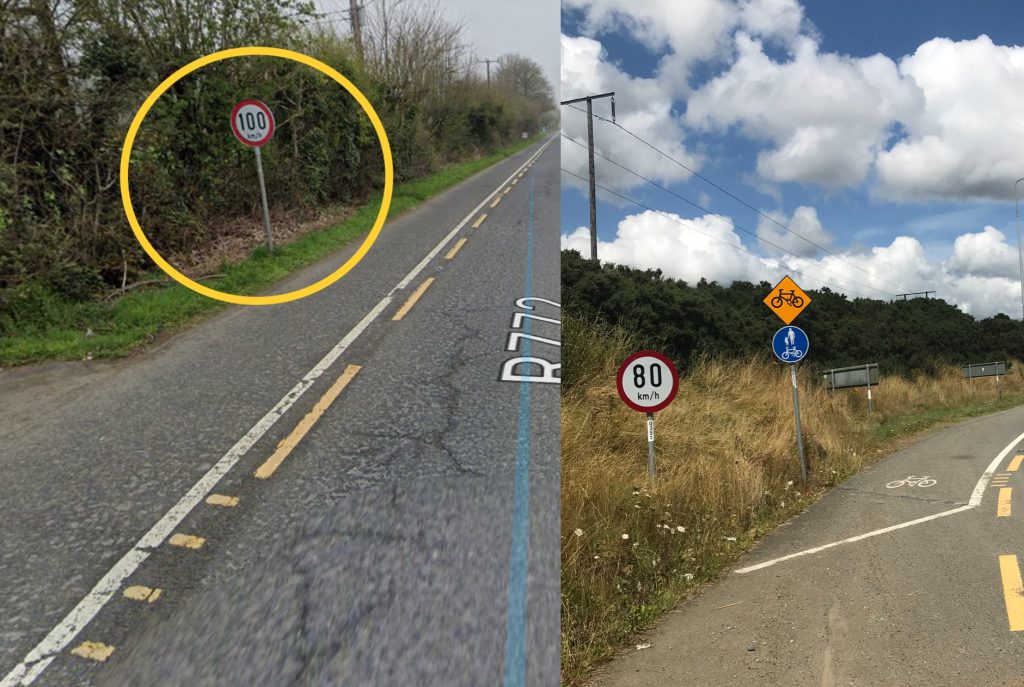
What should this segregation look like?
To test the waters at our meeting, I had brought this image (below) of a similar road refit from Australia. This got unanimous approval and I now know that we have something tangible to work with if the funding is sought and got.
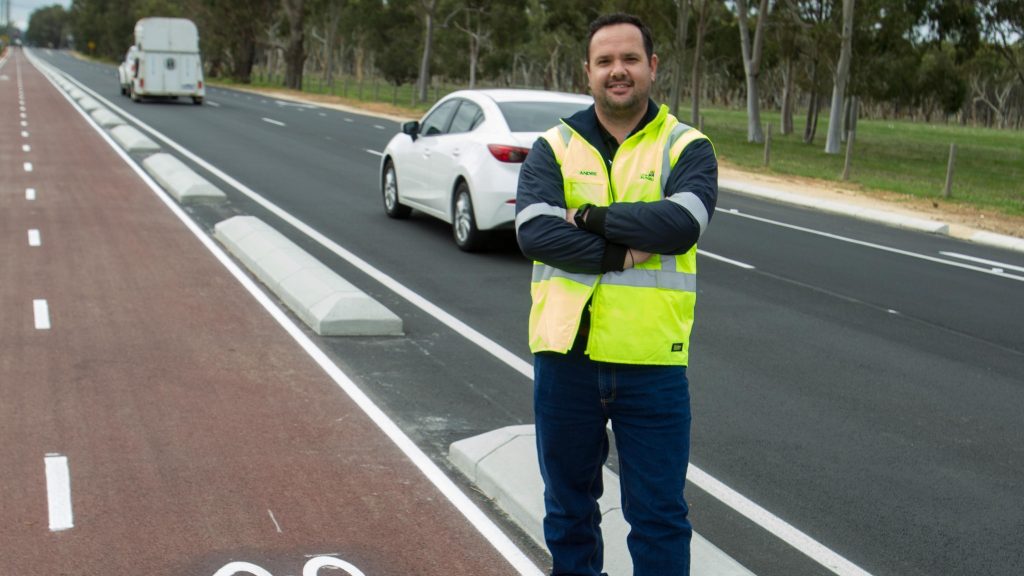
What won’t work is more road paint. Plastic bollards, that are often a target for boy racers and more careless drivers won’t cut the mustard either – These bollards need regular replacement and become unsightly. Indeed I guess it could be argued that the Australian one above could lead to a child straying out on to the road through the gaps. So what could work best here?
Let’s take a look at some options through images that I think are cost effective and could work and then, which option would be my preferred.
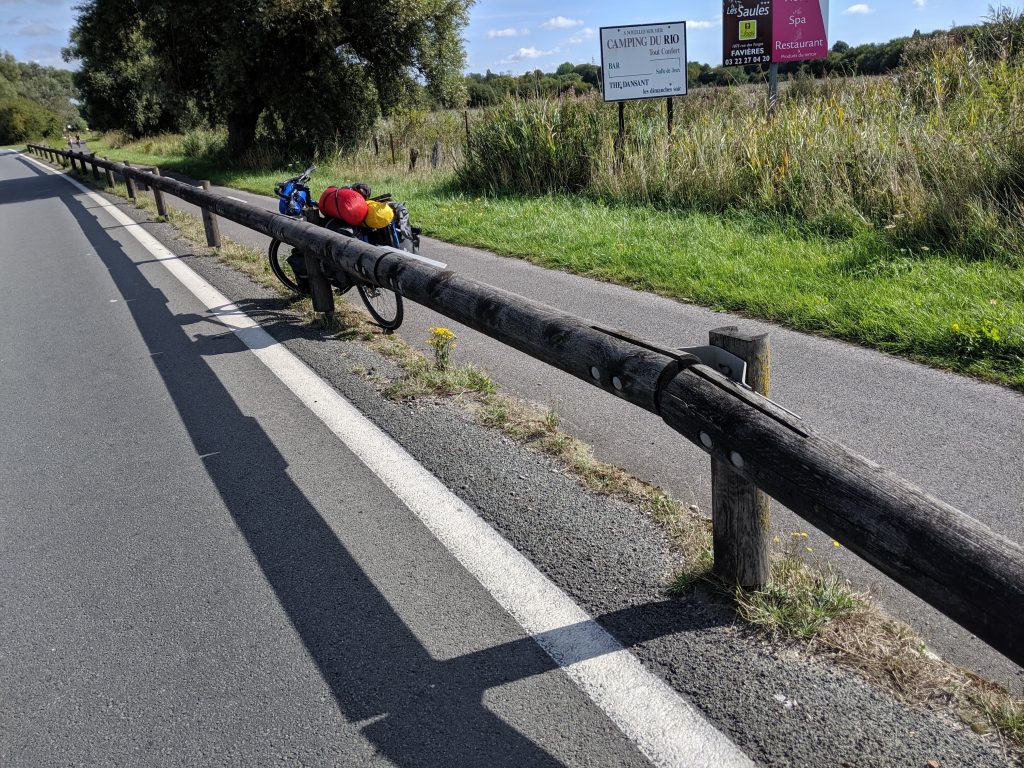
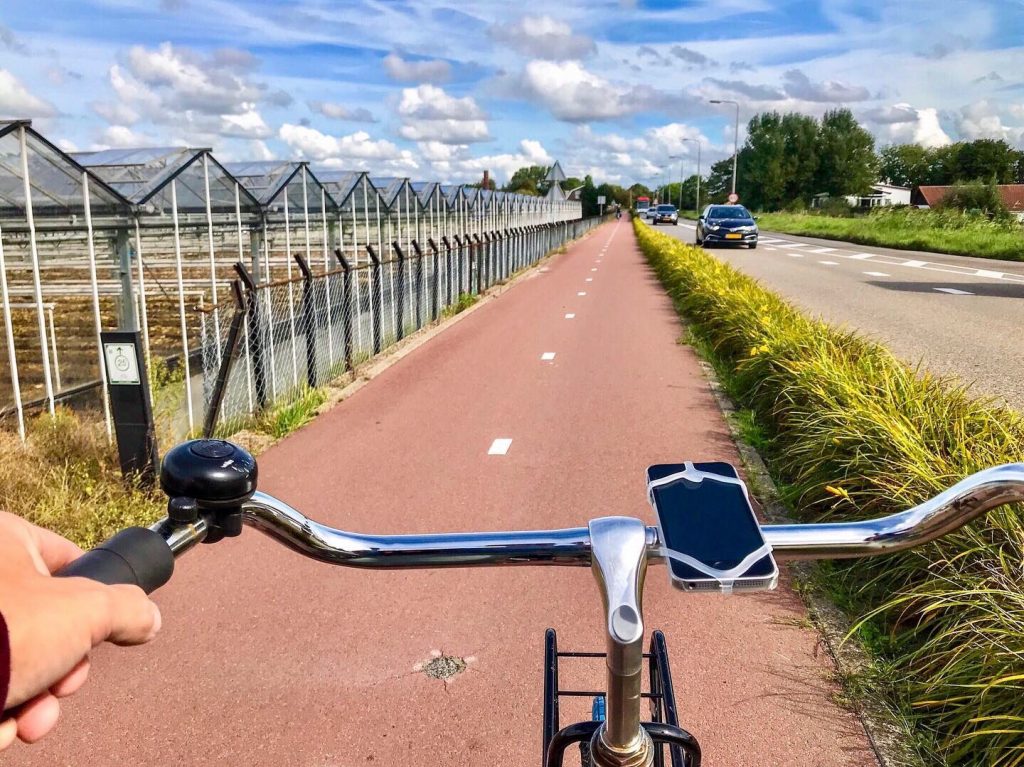
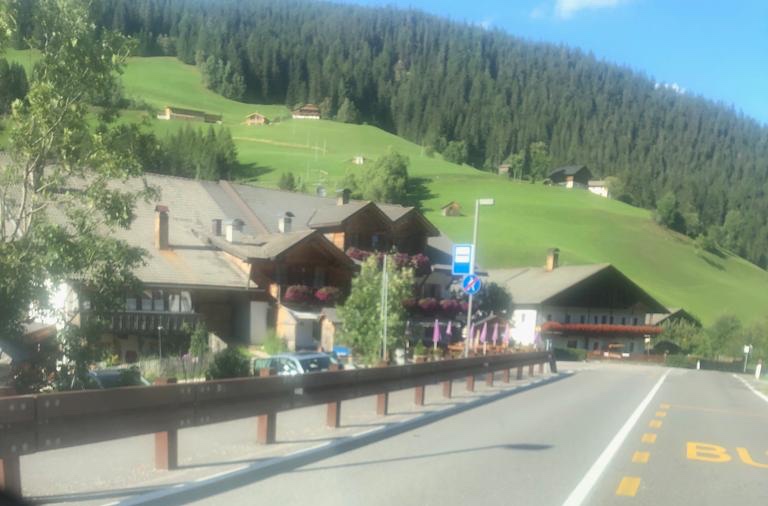
Preferred option – The recycling option.
There are many kms of these metal barriers already on both sides of the Old N11 and the option of recycling these should be explored. These would no longer be needed in the ditch and could be placed at the edge of the the new cycle lanes.
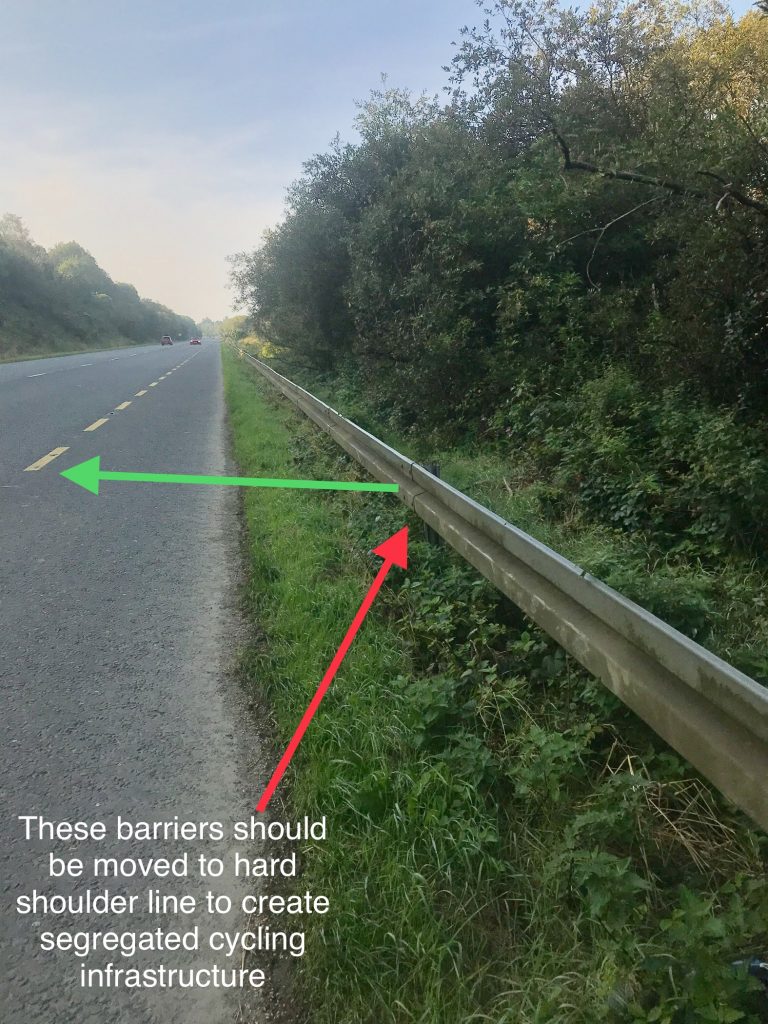
Let’s take a look at a similar project from Pleasantville New York.
The images below are a before and after from route 100 north of Pleasentville, New York.
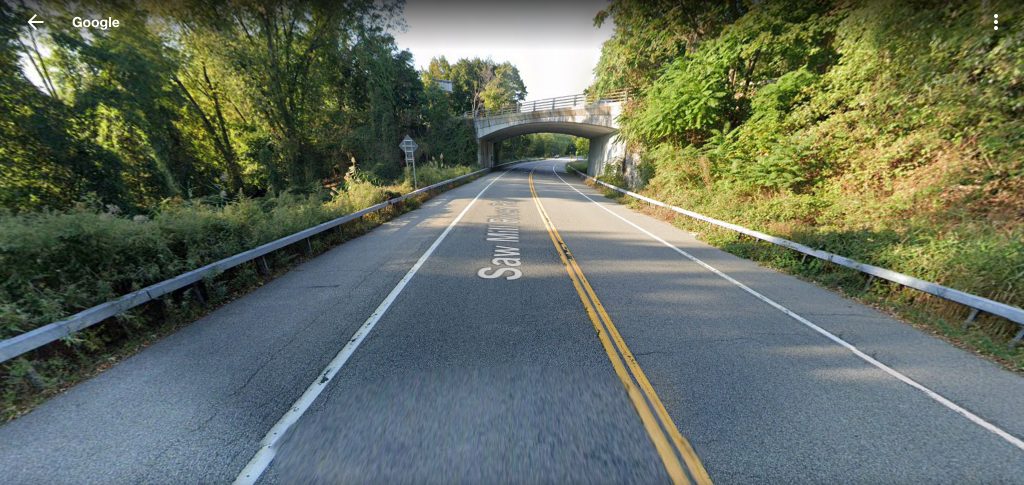
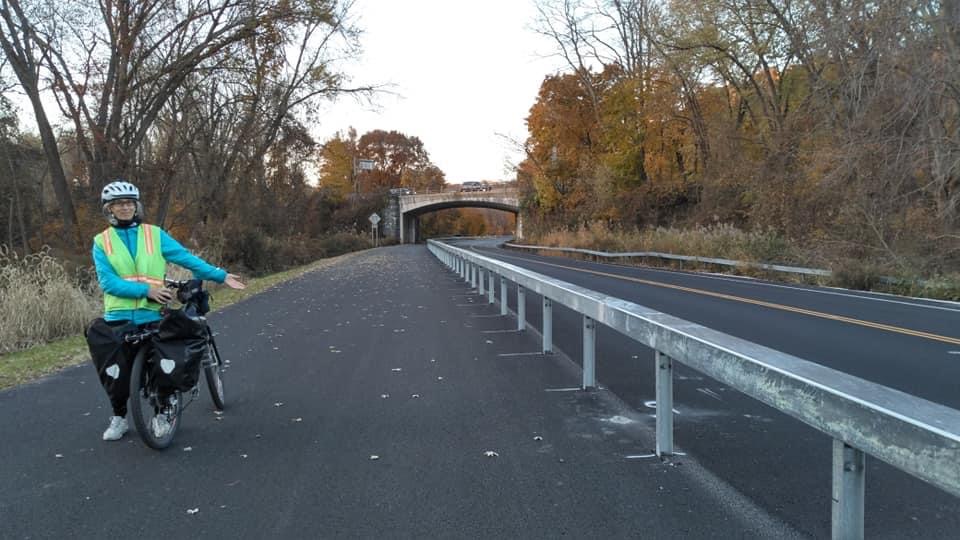
I can’t stress this enough about this road as it exists currently. It has wide hard shoulders in the main and is an area that many cyclists already use. However, in order to attract more risk adverse users, there is a need for physical segregation. If you don’t do that, you will not attract new riders – it’s that simple..
The payback for this is that physical segregation in turn creates issues of debris build up and and a sweeping programme would need to be included. (Hard shoulders keep clear of these in the main by the wind from passing cars. )
Junctions, towns & villages.
Further thought would need to be given as to how we continue this infrastructure through our towns and villages; how we design around junctions will also be important. Of course we can throw out an Irish solution but with that you are most probably looking at a half-way house project which is a sure road to a pig in a poke situation. This will not deliver on the promise of this project.
Let’s look at solutions from the Netherlands and elsewhere and see what works and fits our particular scenario. But we need to think beyond road paint in most situations.
We have some food for thought On how far we want to take this? You will see a couple of examples below from the Netherlands and they weren’t implemented from the get go there either. Sometimes change takes time and takes convincing.
When we get to our rural network, how brave are we going to be? Would we be this brave (as picture below) because that may ultimately where you need to go in some sections to in order to create this network.
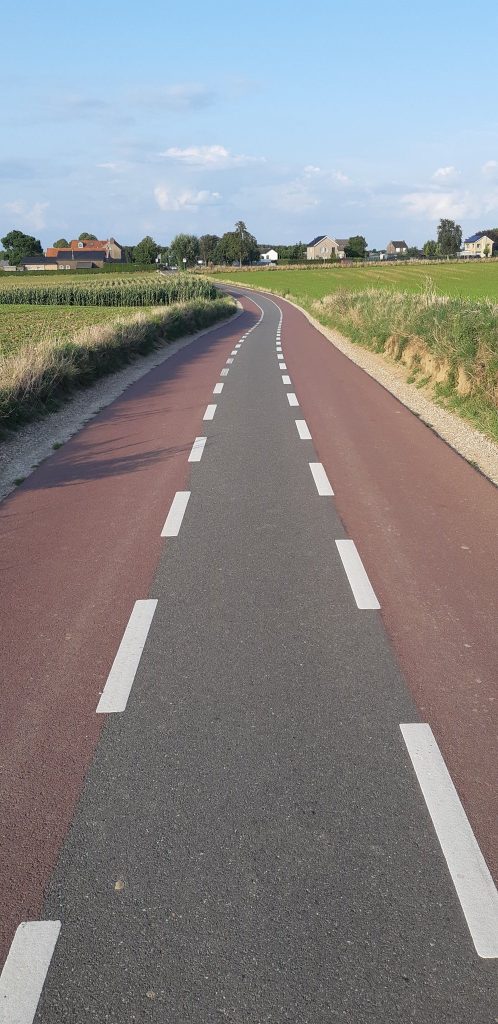
When it comes to some towns and villages, will we be brave enough to put in cycle streets as part of the network because this will need to be part of the conversation. These are streets where cars are welcome but as a ‘guest’ of the cyclist.
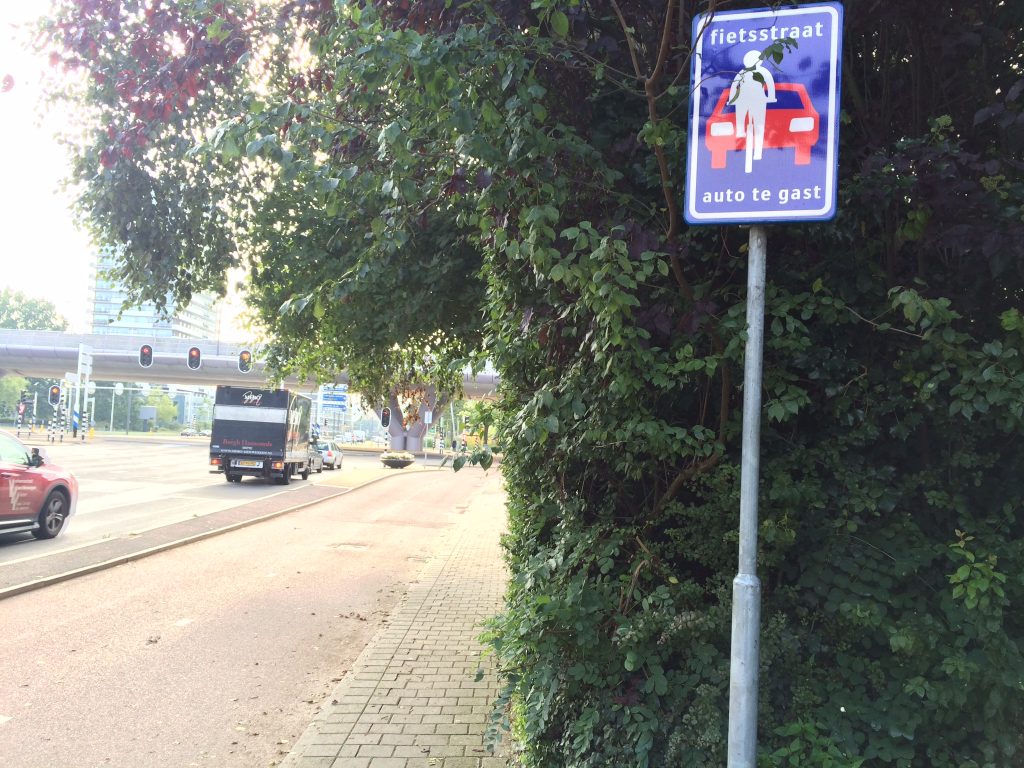
When it come to creating this network, from a tourist perspective, there is plenty of competition from Europe for cycle tourism and this video here from the Netherlands shows how to put one together and how to promote it. Is that a standard that we are willing to come up to?
These are all important points to ponder as we hope to set out on this journey. The stakes are high. It is of huge importance that we get the initial spine 100% correct and the rest will follow over time. Bear in mind that the Dutch started their cycle network in the 70s and are still building on it.
Are we brave enough to take this leap Co. Wexford?

